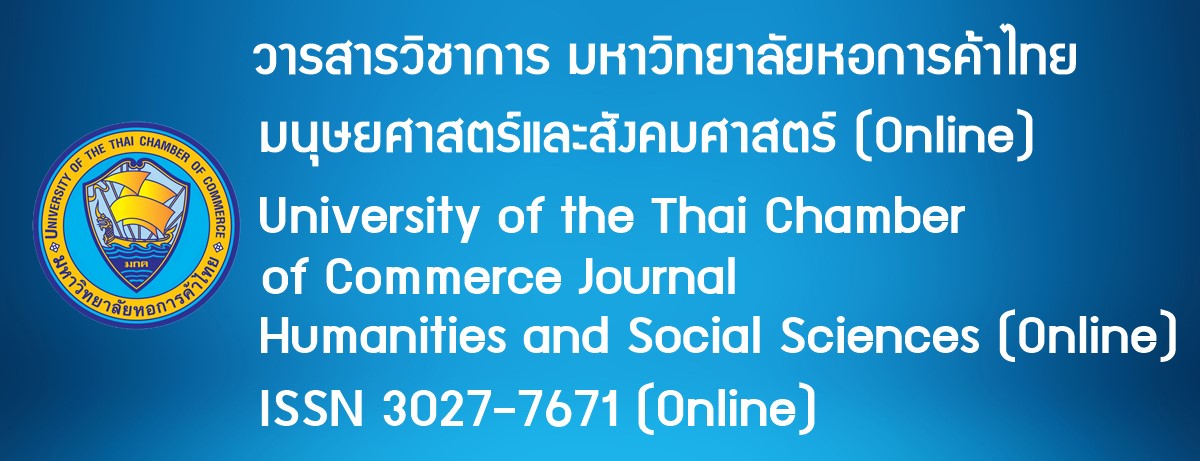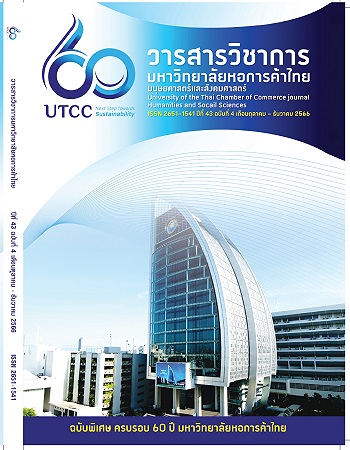การพัฒนาความสามารถด้านการอ่านภาษาอังกฤษเพื่อความเข้าใจของนักศึกษาระดับปริญญาตรีที่เรียนภาษาอังกฤษเป็นภาษาต่างประเทศโดยใช้เทคนิค KWLPlus
Main Article Content
บทคัดย่อ
การวิจัยนี้มีวัตถุประสงค์เพื่อ 1) ศึกษาขอบเขตของเทคนิค KWL Plus ที่สามารถช่วยให้นักศึกษาชั้นปีที่ 1 ในมหาวิทยาลัยเอกชนแห่งหนึ่งในเขตกรุงเทพมหานครสามารถอ่านภาษาอังกฤษได้อย่างมีประสิทธิภาพ 2) เพื่อสำรวจความคิดเห็นของนักศึกษาที่มีต่อการเรียนการอ่านโดยผ่านการใช้เทคนิค KWL- Plus กลุ่มตัวอย่างที่ใช้ในการวิจัยครั้งนี้คือนักศึกษาชั้นปีที่ 1 จำนวน 30 คน ที่ได้มาจากการสุ่มแบบตามความสะดวก โดยที่ผู้วิจัยได้รับมอบหมายให้สอนตามที่สำนักทะเบียนกำหนดให้ ระยะเวลาในการทดลองทั้งหมด 8 คาบ เครื่องมือที่ใช้ในการวิจัยประกอบด้วยแผนการสอน แบบทดสอบความสามารถด้านการอ่าน และแบบสอบถาม สถิติที่ใช้ในการวิเคราะห์ข้อมูลได้แก่ คะแนนเฉลี่ย ค่าเบี่ยงเบนมาตรฐาน และผู้วิจัยได้ทำการทดสอบกลุ่มตัวอย่างก่อนและหลังการสอนด้วยแบบทดสอบวัดความสามารถทางการอ่านภาษาอังกฤษ แล้วนำผลมาวิเคราะห์หาค่าความแตกต่างของคะแนนโดยใช้สูตร t-test แบบ dependent group ผลการศึกษาพบว่า 1) คะแนนของนักศึกษาที่ได้จากการทดสอบหลังการสอนโดยใช้เทคนิค KWL-Plus สูงกว่าก่อนการสอนอย่างมีนัยสำคัญทางสถิติที่ระดับ 0.01 2) นักศึกษาส่วนใหญ่มีทัศนคติที่ดีต่อการเรียนรู้การอ่านภาษาอังกฤษผ่านการใช้เทคนิค KWL-Plus
Article Details

อนุญาตภายใต้เงื่อนไข Creative Commons Attribution-NonCommercial-NoDerivatives 4.0 International License.
ลิขสิทธิ์ของบทความ
ผลงานที่ได้รับการตีพิมพ์ถือเป็นลิขสิทธิ์ของมหาวิทยาลัยหอการค้าไทย ห้ามมิให้นำเนื้อหา ทัศนะ หรือข้อคิดเห็นใด ๆ ของผลงานไปทำซ้ำ ดัดแปลง หรือเผยแพร่ ไม่ว่าทั้งหมดหรือบางส่วนโดยไม่ได้รับอนุญาตเป็นลายลักษณ์อักษรจากมหาวิทยาลัยหอการค้าไทยก่อน
เอกสารอ้างอิง
Blachowicz, C. & Ogle, D. (2001). Reading comprehension: Strategies for independent learners. New York, NY.: Scholastic.
Carrell, P. L. (1989). Metacognitive awareness and second language reading. The Modern Language Journal, 73(2), 120-134. doi: 10.2307/326568
Chansri, C. (2020). Exploring English reading and writing needs of undergraduate science students: A case study in Thailand. Journal Of Community Development Research (Humanities And Social Sciences), 13(3), 23-33. doi: 10.14456/jcdr-hs.2020.23
Jangpiboonpong, R. (2007). KWL-Plus reading strategy: Effects on reading achievement and motivation of mattayomsuksa 3 students (Unpublished Master’s thesis). Srinakarinwirot University, Bangkok.
Jittisukpong, P. (2019). Using semantic mapping in teaching English reading skills of Thai EFL learners. Journal of Roi Et Rajabhat University, 13(2), 201–214. Retrieved from https://so03.tci-thaijo.org/index.php/reru/article/view/213071
Norasing, W. (1997). A comparison of matthayom suksa III students’ reading performance and reading attitudes through KWL-Plus reading teaching instruction based on teacher’s manual (Unpublished Master ’s thesis). Srinakarinwirot University, Bangkok.
Ogle, D. (1986). A teaching model that develops active reading of expository text. Journal of Reading, 39(6), 564-570.
Riswanto, Risnawati, & Lismayanti, D. (2014). The effect of using KWL (Know, Want, Learned) strategy on EFL students’ reading comprehension achievement. International Journal of Humanities and Social Science, 4(7), 225-231. Retrieved from https://www.ijhssnet.com/view.php?u=https://www.ijhssnet.com/journals/Vol_4_No_7_1_May_2014/28.pdf
Siluang, K. (2005). English reading ability of prathomsuksa five students learning through KWL-plus technique (Unpublished Master ’s thesis). University of Phranakhon Rajabhat University,Bangkok.
Sinthopruuangchai, S. (2011). A study of Thai EFL learners’ metacognitive awareness of reading strategies. (Unpublished Master’s thesis). Language Institute, Thammasat University. Bangkok.
Supatranont, P. (2005). Classroom Concordancing: Increasing vocabulary size for academic reading. Proceeding of KOTESOL. Retrieved from http://www.aseese.org/proceedings/ASEE2009/papers/PR2009024BRA.PDF
Urquhart, A. H., & Weir, C. J. (1998). Reading in a second language process product and practice. New York, NY.: Addison Wesley Longman.


